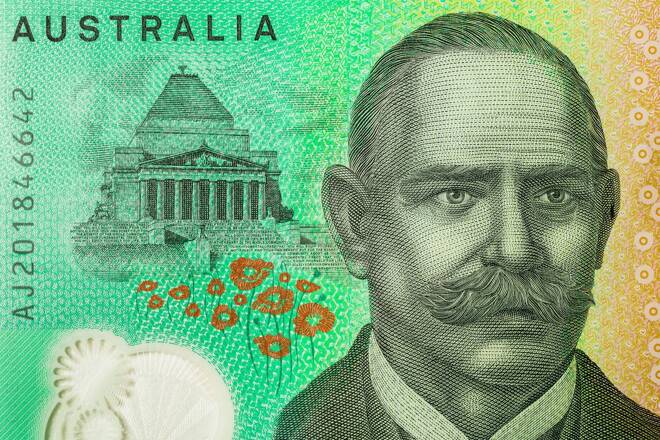Advertisement
Advertisement
AUD to USD Forecast: Fed Chair Powell Will Be in the Spotlight as Yields Retreat
By:
After a dovish RBA rate hike, market focus shifts to Fed Chair Powell, possibly signaling changes in the AUD/USD trend.
Highlights
- The AUD/USD slid by 0.81% on Tuesday, ending the session at $0.64362.
- A dovish RBA rate hike sent the Aussie dollar into negative territory.
- On Wednesday, the Australian housing sector will be in focus before Fed Chair Jerome Powell later in the session.
Tuesday Overview of the AUD/USD
The AUD/USD slid by 0.81% on Tuesday. Following a 0.36% loss on Monday, the Aussie dollar ended the day at $0.64362. The Aussie dollar rose to a high of $0.65014 before falling to a low of $0.64039.
Australian Housing Sector in Focus
On Wednesday, the Australian housing sector will be in the spotlight. Finalized building approval figures for September will need consideration. According to the preliminary report, building approvals fell by 4.6% in September vs. a 7.2% gain in August. A downward revision could impact the appetite for the Aussie dollar.
The Australian construction industry contributes less than 10% to the Australian economy. However, housing sector conditions affect consumer sentiment and private consumption. Elevated interest rates have increased borrowing costs, impacting disposable income. A downward trend in disposable income and deteriorating housing sector conditions impact spending and consumer confidence.
Australian private consumption contributes over 50% to the Australian economy. Waning consumer confidence and a negative consumption outlook would increase the risk of a recession. However, a weaker consumption outlook would ease demand-driven inflationary pressures and the need for higher interest rates.
Fed Chair Powell in the Spotlight
On Wednesday, Fed Chair Jerome Powell is on the calendar to speak. Since the FOMC press conference, US Treasury yields have retreated, raising concerns the Fed may delay the timing of an interest rate cut. While a softer labor market may ease pressure on the Fed, uncertainty toward the Fed rate path resurfaced this week.
Affirmation that labor market conditions have softened sufficiently will likely impact the appetite for the US dollar. Since the FOMC press conference, unit labor costs and the US Jobs Report reflected a weakening US labor market.
On Wednesday, other Fed speakers include Fed Vice Chair John Williams and FOMC voting members Michael Barr and Philip Jefferson.
Short-Term Forecast
After the dovish RBA rate hike on Tuesday, the market focus returns to the Fed and Fed Chair Powell. The Fed Chair may affirm labor market conditions have softened sufficiently, signaling an end to the Fed rate hike cycle. Affirmation could raise bets on a June rate cut and support an AUD/USD return to $0.65.
AUD/USD Price Action
Daily Chart
The AUD/USD held above the 50-day EMA while sitting below the 200-day EMA, sending bullish near-term but bearish longer-term price signals. On Tuesday, the 50-day EMA rejected an AUD/USD drop below $0.64.
A return to $0.64500 would support a break above the $0.64900 resistance level to bring the 200-day EMA into play.
Fed Chair Powell and other Fed speakers will likely have more influence than the Australian housing sector data. A hawkish Fed would support a fall through the 50-day EMA to bring the $0.63854 resistance level into play.
A 14-period Daily RSI reading of 54.03 indicates a break above the $0.64900 resistance level before entering overbought territory (typically above 70 on the RSI scale).
4-Hourly Chart
The AUD/USD sits above the 50-day and 200-day EMAs, sending bullish price signals.
A return to $0.64500 would support a break above the $0.64900 resistance level and a return to $0.65.
However, a fall through the 50-day EMA would give the bears a run at the 200-day EMA and $0.63854 support level.
The 14-period 4-Hourly RSI at 48.23 suggests an AUD/USD drop below the $0.63854 support level before entering oversold territory.
About the Author
Bob Masonauthor
With over 28 years of experience in the financial industry, Bob has worked with various global rating agencies and multinational banks. Currently he is covering currencies, commodities, alternative asset classes and global equities, focusing mostly on European and Asian markets.
Advertisement
